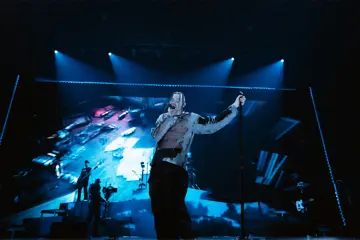
The methods of Steve Reich as a composer and Anne Teresa De Keersmaeker as a choreographer parallel one another without one deigning to "illustrate" the other (that Reich's music preceded Keersmaeker's choreography by more than a decade speaks to her accomplishment in this bare partnering). It could not be said, for instance, that a particularly high-pitched clap in the final movement corresponds to a rise of the knee, or that a particular polyrhythmic pattern is rendered with a particular equivalent sequence performed of movement, as much as any given snippet from the performance could suggest as much. But the music and movement emerge from parallel philosophies: both use a limited palette — of notes and rhythms, and of bodily movements — as the basis for a clinical exploration of the various permutations these fixed elements allow.
It is clinical, impressive for the precision with which Keersmaeker (still!) and Tale Dolven execute it, but also cyclical — the viewer capable of establishing throughout the duration their own markers of emphasis, of loops starting and ending, in an experience similar to the disorientation created by the kinetic bistable optical illusion of the pirouetting silhouette — and in this way lyrical.















